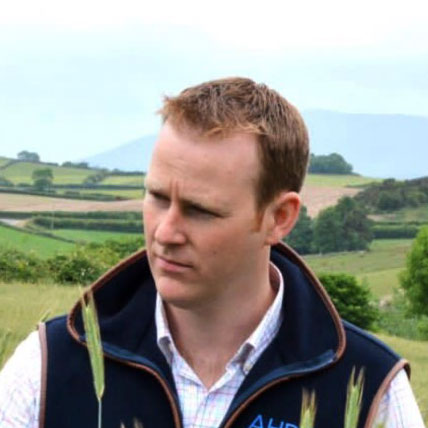Challenges for Farmers: Poor Yields, Low Prices, and Unfavorable Weather Conditions

The 2024 harvest mirrors much of what we experienced in 2023, leaving many farmers in Northern Ireland feeling frustrated. The combination of poor yields, low prices, and unfavorable weather has contributed to a generally bleak outlook.
On a brighter note, winter oats have produced exceptional yields, surpassing 7.5t/ha. I was relieved to clear the fields as the Husky variety grew increasingly close to the ground.
Both Mascani and Husky provided similar yields; however, the straw from Husky is more characteristic of barley, while Mascani remains, as usual, a dull and damp concern. Spring oats, unfortunately, are suffering significantly from the relentless wind and rain.
For more information, see: Advice for growers addressing ergot challenges this harvest.
A rushed Sunday three weeks ago resulted in decent progress with winter wheat, and looking back, it was fortunate that we managed to harvest as much as we did, given the subsequent lull in activity.
In my previous column, I mentioned my hopes for above-average yields. Regrettably, with an average of just 8.9t/ha so far, those hopes have not materialized.
The quality and bushel weight of the crop are excellent, yet as I observe it being fed into the combine, I can see it was disappointingly thin overall. As a relatively new driver of the combine, I have found the hands-on experience of harvesting invaluable.
During my visits to the fields to evaluate soil conditions with my trusty spade, I’ve been pleased to discover positive developments beneath the surface.
Despite the difficult season, I’ve detected little to no soil compaction, even in areas where the combine has traversed.
This prompted a closer examination of our drilling trial plots. The soil structure appears robust across all three plots.
The direct drilled plot is the driest, with some signs of compaction in the ploughed areas; however, none of the plots exhibit serious compaction issues before harvest.
Gazing across at the neighboring winter oats fields, overflowing with damp straw weeks post-harvest, I find myself questioning the value of chasing straw prices.
While cash flow is essential, I prioritize soil health above all else. I’ve managed to harvest multiple fields while causing minimal harm to the soil structure.
Nonetheless, I will need to traverse the same paths made by the combine with the tractor at least three more times to dry and bale the straw. How much strain can the soil endure?

Maria Sanchez completed her Bachelor’s degree in Plant Sciences from the University of California, Davis, in the USA. Her studies focused on plant genetics and biotechnology, with an emphasis on developing disease-resistant crop varieties. Maria has contributed to several research projects aimed at improving crop resilience to climate change and is now pursuing her Master’s degree in Plant Breeding.

